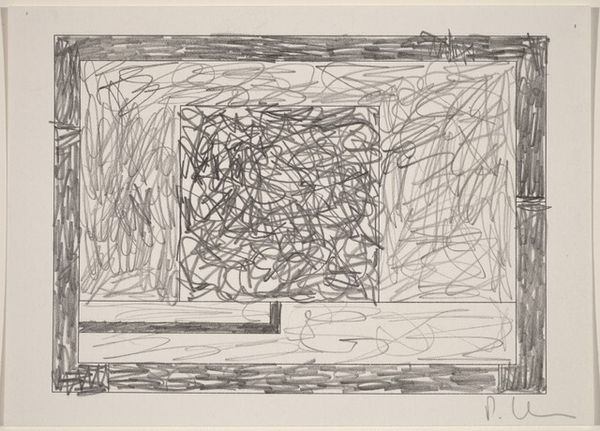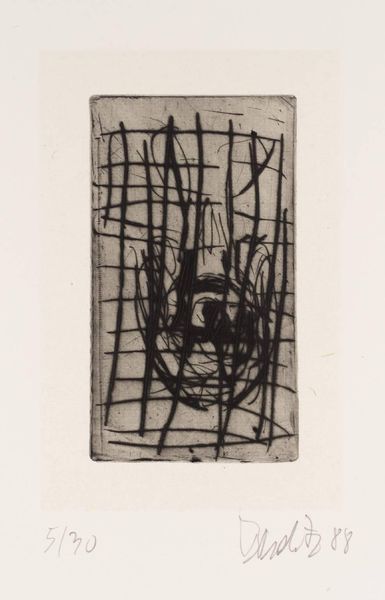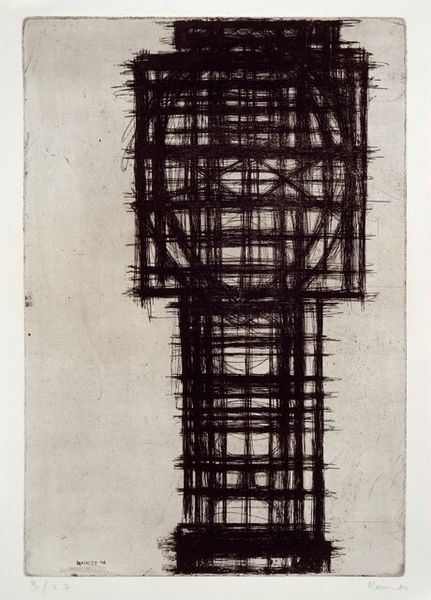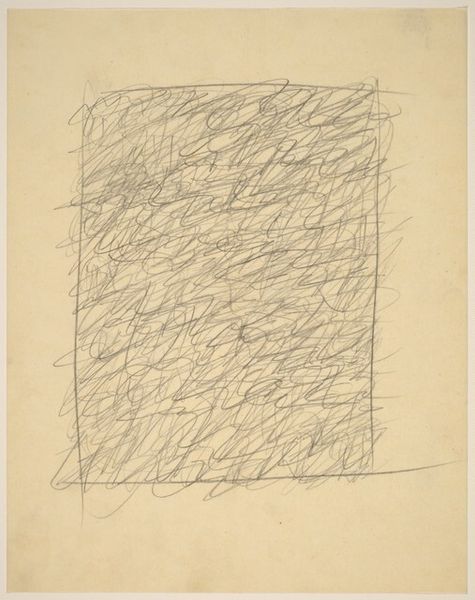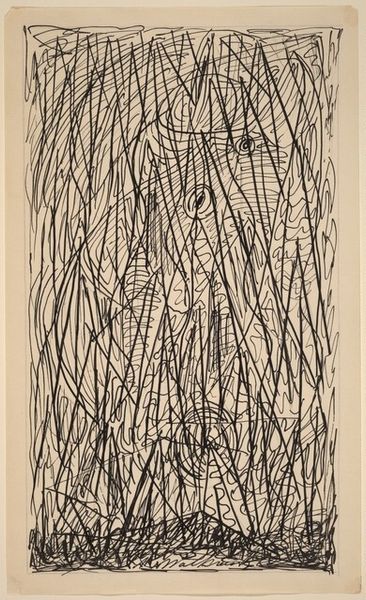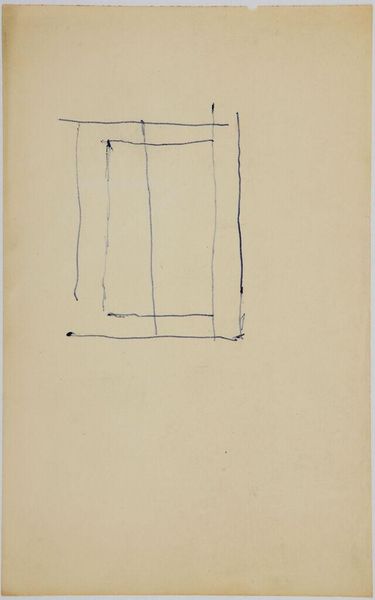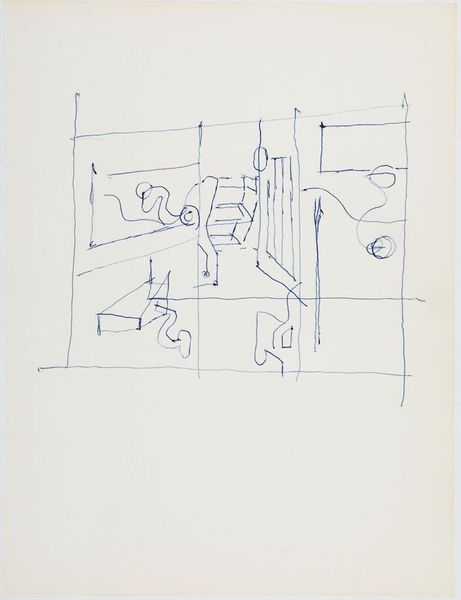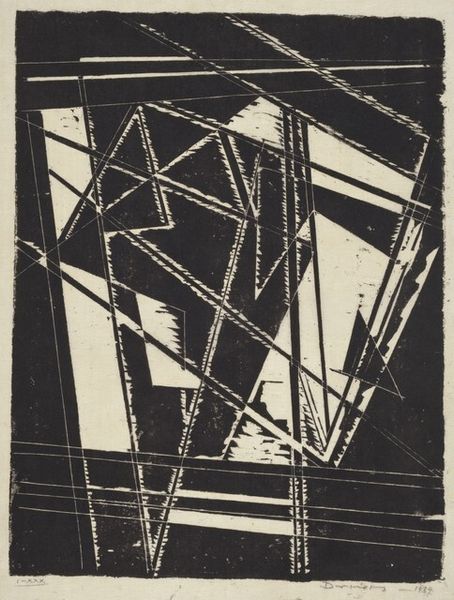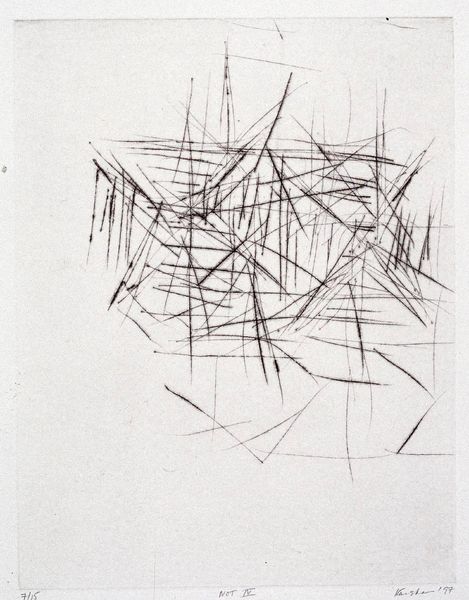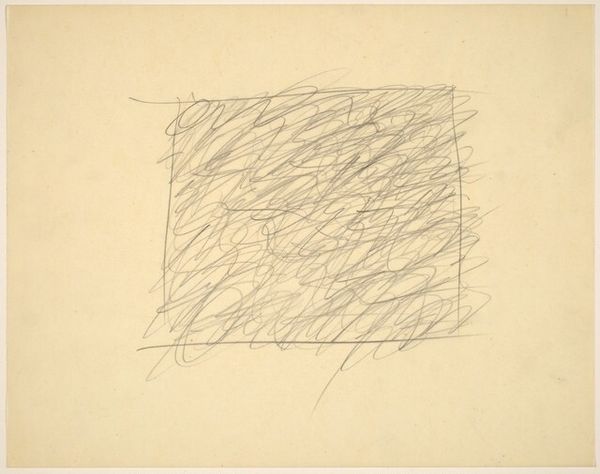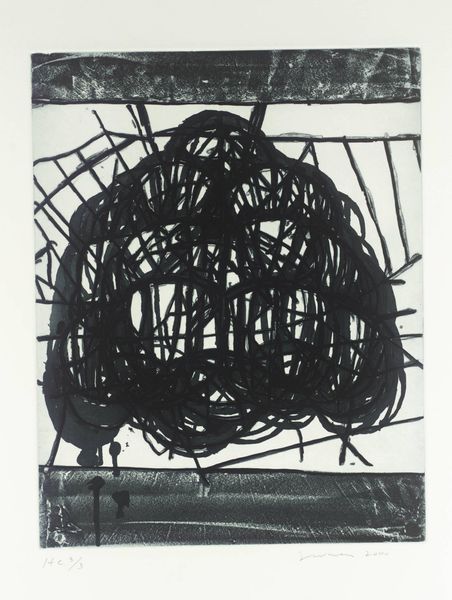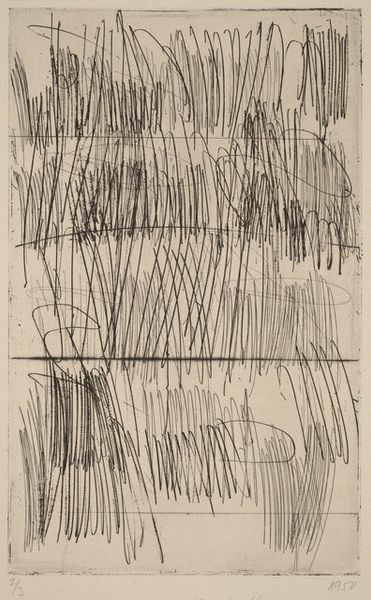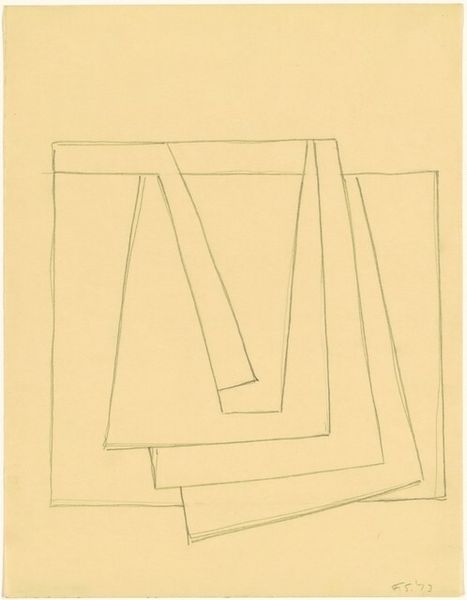
drawing, ink
#
drawing
#
ink
#
geometric
#
abstraction
#
line
Copyright: Brice Marden,Fair Use
Editor: Brice Marden’s 1973 ink drawing, “Suicide Note,” is surprisingly captivating. It is this dense thicket of frantic lines, a rectangular space filled with chaotic energy. How do you interpret this work, given the weight of its title? Curator: The title indeed casts a long shadow. Visually, the repeated lines create a cage or a thicket; this becomes a powerful symbol. Think of the labyrinth, a classical image of confusion and entrapment, often symbolizing the search for meaning or escape from inescapable circumstances. Does this imagery trigger any personal associations for you? Editor: I immediately feel this sense of claustrophobia, almost as if the lines are closing in. The contrast between the contained chaos within the rectangle and the emptiness of the surrounding paper is so stark. Curator: Yes, that deliberate framing intensifies the internal struggle. It’s almost as if Marden is visually representing the internal world versus external reality. Line, in many cultures, from ancient cartography to modern data visualization, often signifies direction, pathways, and even life itself. Consider the uncontrolled, overlapping nature of these lines; what symbolic weight do they take on when connected to emotional distress? Editor: I suppose they highlight a sense of fractured thoughts or a loss of direction, maybe the overwhelming feeling of being trapped in one's mind. Curator: Precisely. Furthermore, there's the question of the "note" itself. A suicide note is an attempt at communication, a final act of self-expression. Here, that expression is rendered abstract, almost indecipherable. Do you think the abstraction adds to or detracts from its emotional impact? Editor: It certainly complicates it, but in a compelling way. It universalizes the experience. It's not a specific story but a representation of profound internal conflict. I never considered how an abstraction can tell so much. Curator: Exactly. Marden uses abstraction to engage with deep-seated human emotions and experiences. Seeing those cultural symbols visualized changes the viewing experience and encourages dialogue beyond immediate assumptions.
Comments
No comments
Be the first to comment and join the conversation on the ultimate creative platform.
